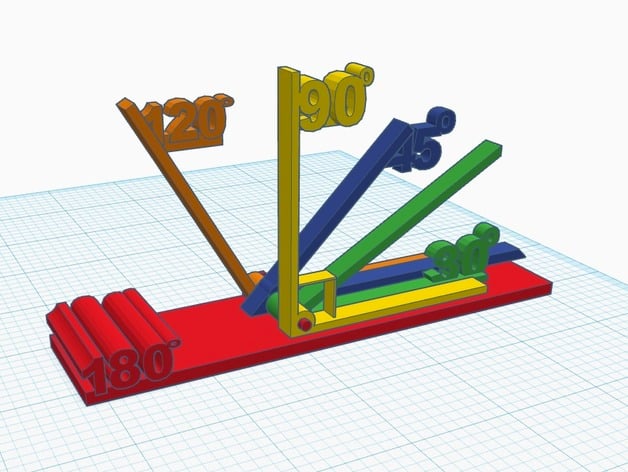
Teach Angles by Making a Modular Protractor!
thingiverse
This lesson is designed to help students build a visual understanding of different angle sizes. By making their own protractor with modular parts, students will improve their ability to estimate and measure angles. This project includes a sample modular protractor, but the goal is to show students how to make one for themselves. Print Settings Printer Brand: MakerBot Printer Model: MakerBot Replicator (5th Generation) Rafts: Yes Supports: No Resolution: 0.3 Infill: 10% Notes: These are pretty easy to print. The 180-degree model will require supports depending on how you print it. Standards CCSS.MATH.CONTENT.4.MD.C.5 Overview and Background Protractors can be tough for students to understand because the markings go in both directions. With this modular protractor, students can use one angle measure at a time, then combine different angles to equal bigger angles. This will greatly improve their ability to estimate angles and subsequently improve their ability to measure angles using a protractor. Overview and Background Students will learn how to estimate and measure the size of angles by using a modular protractor and later making their own. Objectives Students will be able to estimate and measure angles. Standards Geometric measurement: understand concepts of angle and measure angles. CCSS.MATH.CONTENT.4.MD.C.5 Recognize angles as geometric shapes that are formed wherever two rays share a common endpoint, and understand concepts of angle measurement: CCSS.MATH.CONTENT.4.MD.C.5.A An angle is measured with reference to a circle with its center at the common endpoint of the rays, by considering the fraction of the circular arc between the points where the two rays intersect the circle. CCSS.MATH.CONTENT.4.MD.C.5.B An angle that turns through n one-degree angles is said to have an angle measure of n degrees. CCSS.MATH.CONTENT.4.MD.C.6 Measure angles in whole-number degrees using a protractor. Sketch angles of specified measure. CCSS.MATH.CONTENT.4.MD.C.7 Recognize angle measure as additive. When an angle is decomposed into non-overlapping parts, the angle measure of the whole is the sum of the angle measures of the parts. Solve addition and subtraction problems to find unknown angles on a diagram in real-world and mathematical problems. Lesson Plan and Activity After students use the protractor, teach them to make their own using Tinkercad.com. This can be done easily using the built-in protractor. Step 1: Start on a blank work plane and drag over a red square from the shapes toolbar. Step 2: Make the square into a thinner stick. Step 3: Select the stick and copy->paste the shape, leaving it in place. Step 4: Click on the double-headed arrow and rotate the stick. The protractor will appear, allowing you to make an angle of your choosing. Step 5: Eliminate excess using a hole box. Step 6: Don't forget to select both shapes and group them. Duration of Lesson 2-3 classes Preparation Start with some review of angle concepts and maybe create a few worksheets for pre-assessment information. This website has common-core aligned worksheets: http://www.commoncoresheets.com/Angles.php This website is good for visual understanding of angles: http://www.homeschoolmath.net/teaching/g/measure_angles.php This website is great for exit quizzes: www.thatquiz.org
With this file you will be able to print Teach Angles by Making a Modular Protractor! with your 3D printer. Click on the button and save the file on your computer to work, edit or customize your design. You can also find more 3D designs for printers on Teach Angles by Making a Modular Protractor!.
